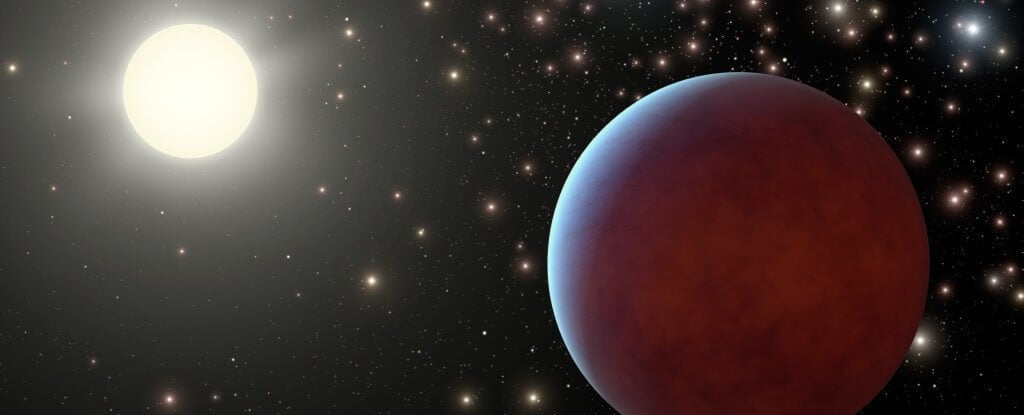- Get link
- X
- Other Apps

A peculiarity of the WASP-104b planet discovered by the astronomers of the Kiel University (Great Britain) is that its dense atmosphere absorbs practically all the light that enters it. Researchers compare it with coal and say that this is one of the darkest planets ever discovered.
The object belongs to the class of hot Jupiters, which are huge gas giants, similar in mass to Jupiter, but at the same time being very close to their stars, due to which they have very high temperatures. Usually the orbital period of such planets is less than 10 days.
Representatives of this class are not uncommon, but they often demonstrate features that make them very interesting for research. For example, one such feature is that hot Jupiters are much darker than ordinary planets.
Most of the hot Jupiters discovered to date, as a rule, absorb about 40 percent of the world. However, in 2008, astronomers discovered the planet WASP-12b, which turned out to be much darker than their counterparts. Scientists have found that the planet is capable of absorbing at least 94 percent of the incoming light. The detected WASP-104b, in turn, was even darker. According to the calculations of astronomers, this object is able to absorb from 97 to 99 percent of the light of its star.
"Among all the darkest planets, which are written in textbooks, I can easily write WASP-104b in the top five of the darkest. No, even in the top three, "- says the head of the study, the astrophysicist of the University of Kilo Theo Mocknick.
One possible explanation for its "dark nature" may be the distance on which the planet is located from its star - a yellow dwarf, located about 466 light years from us in the constellation of Leo. The distance between WASP-104b and its native star is only about 4.3 million kilometers. Because of this, its orbital period of rotation is only 1.77 days.
Like most of the hot Jupiters, the WASP-104b has a tidal grip (one of its sides is always turned towards the star). In other words, there is an eternal day on one side of the planet, and on the other - an eternal night. Because of this, the daytime side of the planet is so hot that clouds can not form over it, which would increase its reflectivity, and on the night side, ice can not be formed, since the planet's temperature is generally very high.
Instead, WASP-104b has a very thick layer of smoky atmosphere, most likely having a high content of atomic sodium and potassium particles absorbing light in the visible range of the spectrum and making the planet very dark even on the day side, which is always illuminated by a star. On the night side of the planet, clouds are very likely to form, but since there is never light, then there is nothing to reflect these clouds.
Despite the fact that hot Jupiters, as a rule, are darker than ordinary planets, they are not more difficult to detect than ordinary planets. All of them are very far from us, so that they can be seen directly or discerned against the background of much brighter stars around which they are located.
The only available method for detecting these planets is to observe the brightness variation of the stars themselves, which, as a rule, decreases when the planet passes in front of the star and the observer. This search is called the transit method of detection, and it is the main and very effective way of searching for new exoplanets, for example, such space telescopes as Kepler.
Since hot Jupiters are very large planets, they can also be detected using the Doppler method, which consists in the spectrometric measurement of the radial velocity of a star. A star possessing a planetary system will move in its own small orbit in response to the attraction of the planet. This in turn will lead to a change in the speed with which the star moves toward and from the Earth (that is, to a change in the radial velocity of the star relative to the Earth).
In addition, such planets can not be called black, like, say, coal, tar or the same Vantablack (the darkest material on Earth). Dark they are called more likely to determine their reflective, rather than radiated features. Since these planets are usually very hot, they can have a deep bluish, violet or dim reddish glow.
At the moment, the darkest of the ever-discovered hot Jupiters is the planet TrES-2b, which reflects only 0.1 percent of the light that hits it.
The article is based on materials .
- Get link
- X
- Other Apps
Comments
Post a Comment